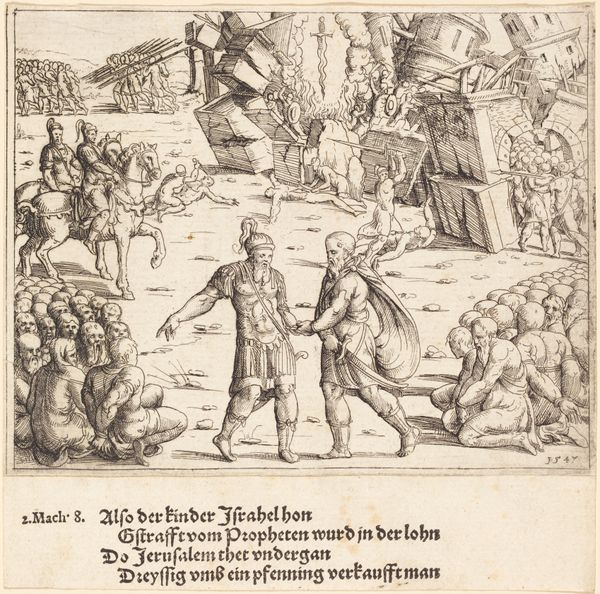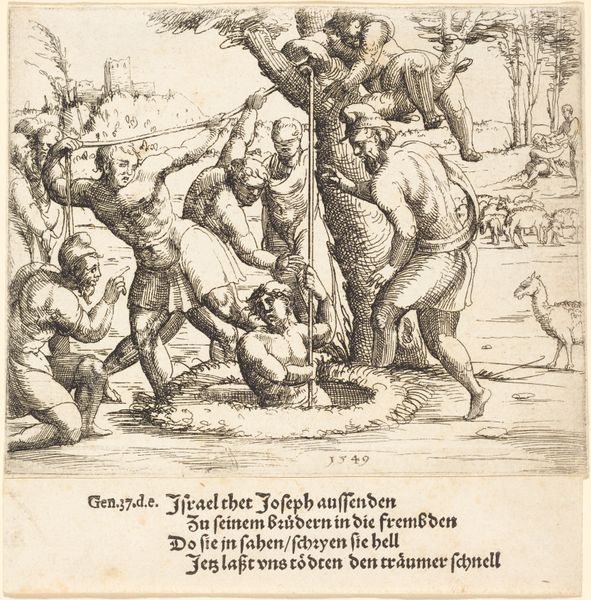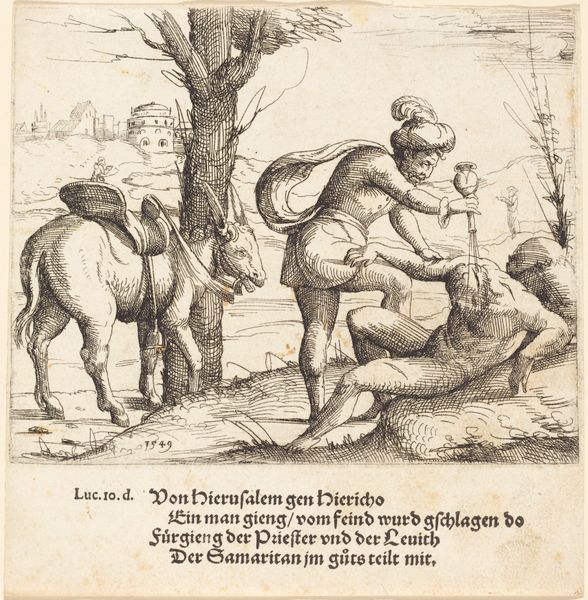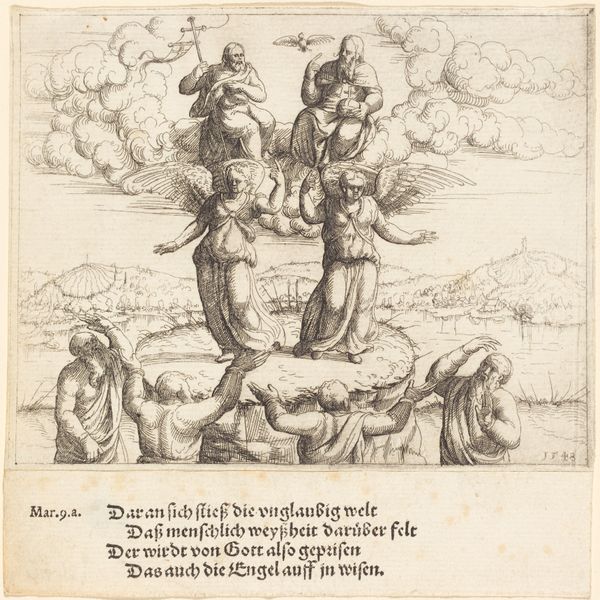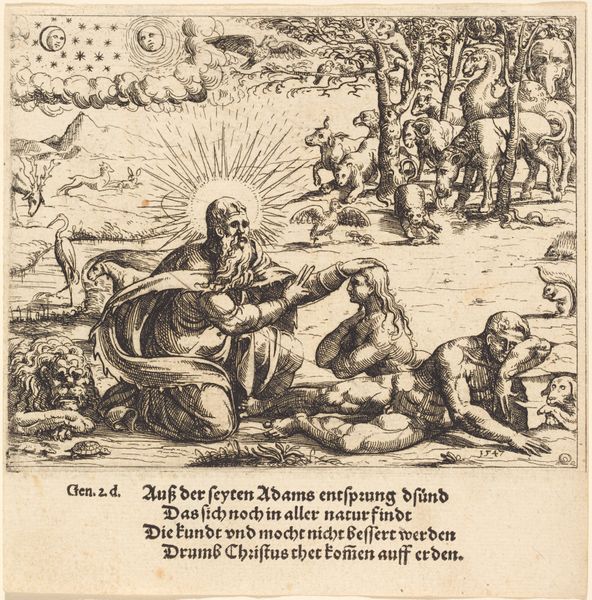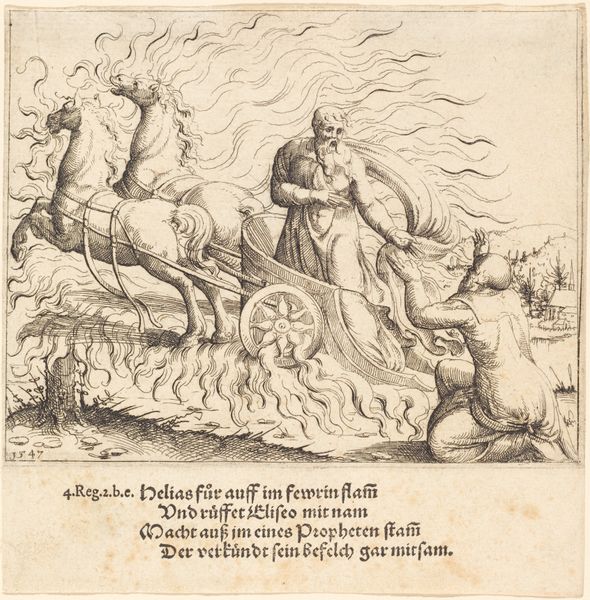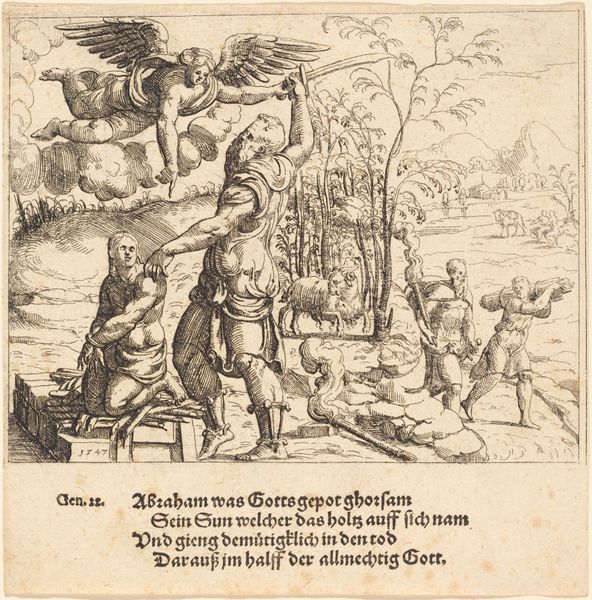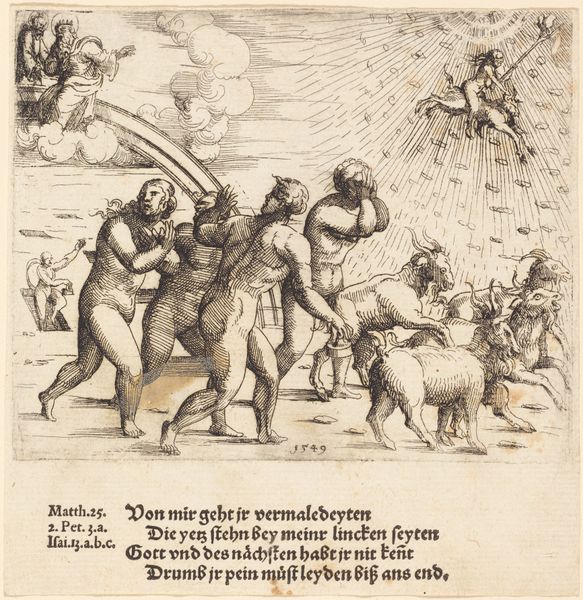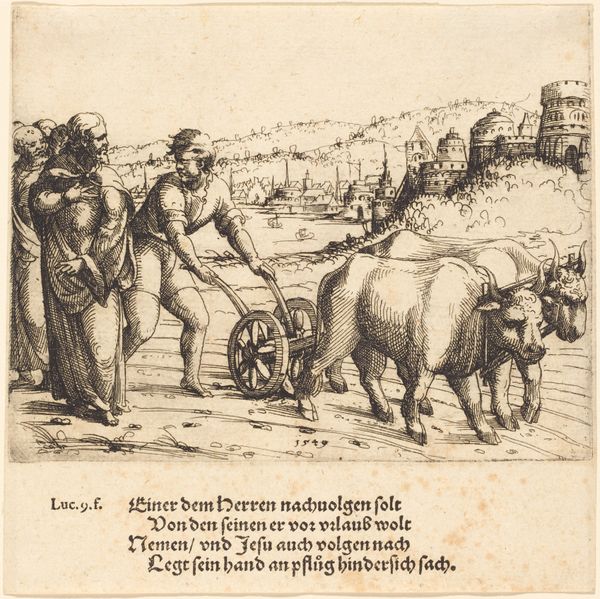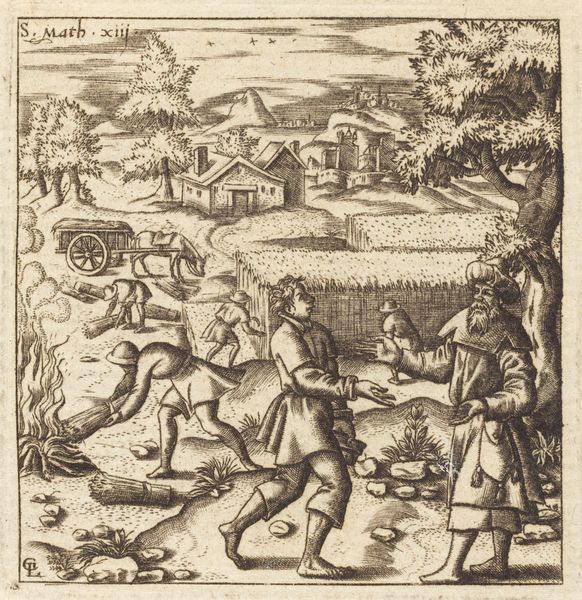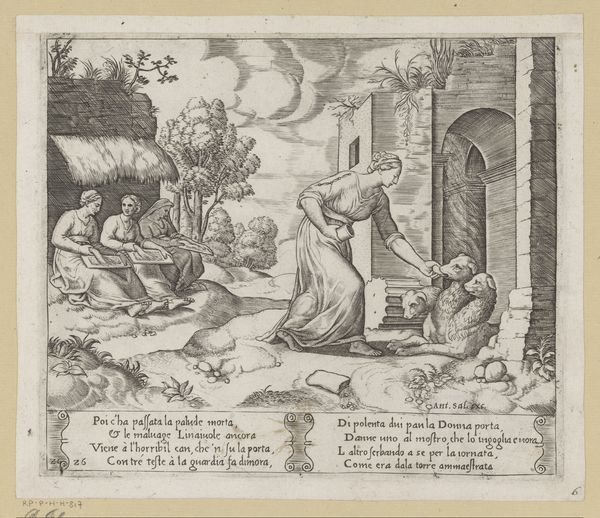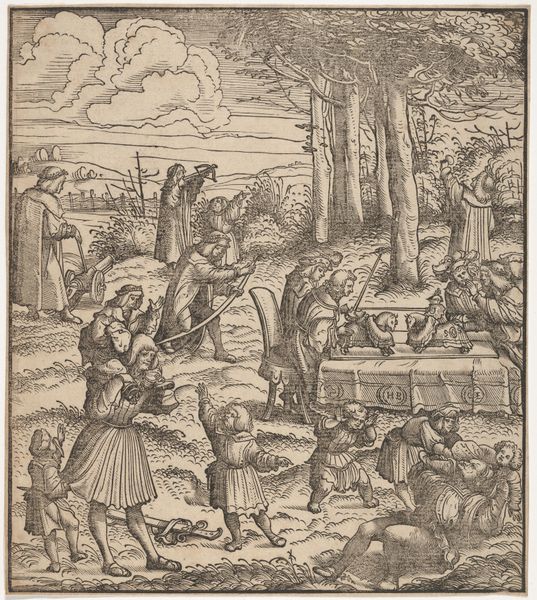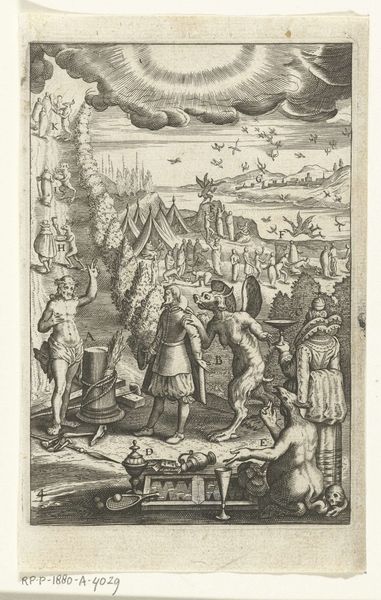
print, engraving
#
allegory
# print
#
mannerism
#
figuration
#
history-painting
#
engraving
Copyright: National Gallery of Art: CC0 1.0
Curator: Here we have Augustin Hirschvogel's "The Last Judgement" from 1549, rendered as an engraving. Tell me, what springs to mind when you look at it? Editor: The figures! They strike me as so bizarrely elongated, very…uncomfortable somehow. And those sheep—or are they wolves?—standing upright like that. I can’t quite put my finger on it, but it's unsettling. What do you make of it all? Curator: Unsettling is spot on. Hirschvogel dances with Mannerism here, exaggerating form and space, distorting the natural to get at a deeper truth. He’s inviting us to contemplate a world thrown off its axis by divine intervention. You see the figures rising, almost imploring, while those creatures below, reminiscent of wolves perhaps, also seem caught in this spiritual updraft. It feels very...Germanic somehow, a vision born from the crucible of Reformation-era anxieties, wouldn’t you say? Editor: Absolutely. The religious context adds a whole other layer. I'm curious about those little flames held by some of the figures. What do those represent? Curator: Ah, a wonderful question. These small flames might represent hope, or the soul ascending. Notice, they are counterbalanced by the figures already with God and the rainbow, safe in Heaven. Hirschvogel gives us a sense of contrast in the chaos. There’s judgement here, yes, but also great hope. He implies there is not just punishment, but also divine favor and potential grace. Editor: So much going on! I initially only saw oddness but now can really understand what an anxiety-ridden but also hopeful perspective it illustrates. Curator: Indeed. He makes us question the familiar and find something more profound in that discomfort.
Comments
No comments
Be the first to comment and join the conversation on the ultimate creative platform.
